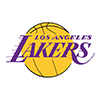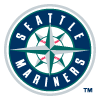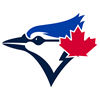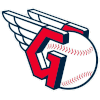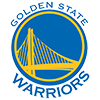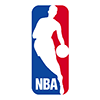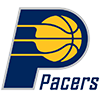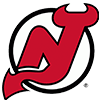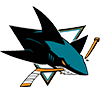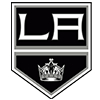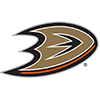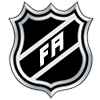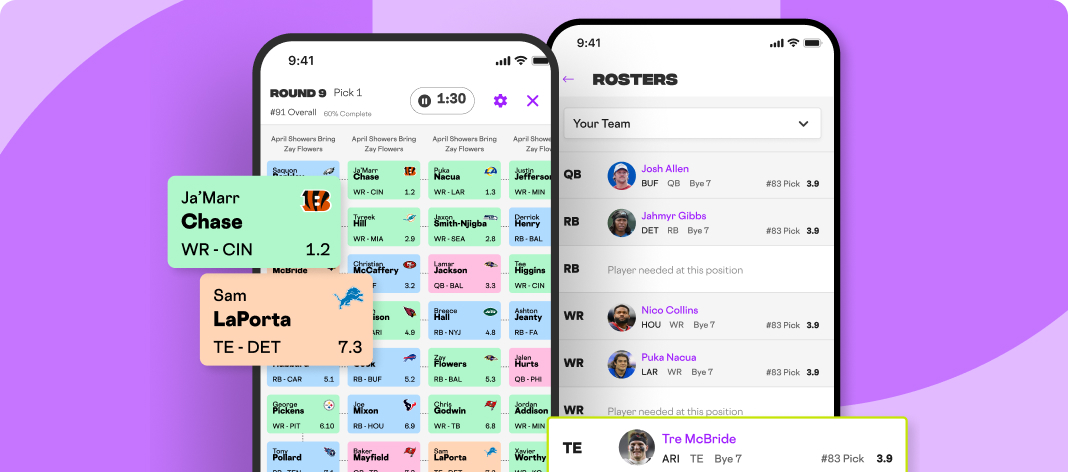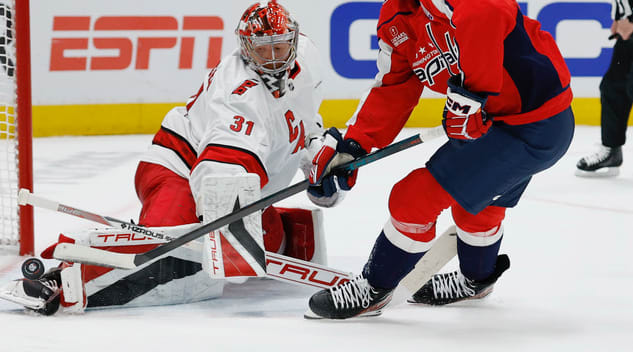Top NHL Prospects to Watch for the 2025-26 Season: A Comprehensive Guide
This is the first of our annual two-part series detailing the top prospects in the NHL entering the 2025-26 season.
A couple quick notes before we get started.
- There were roughly 15 names I considered for the final handful of spots on the top 100. It feels as if there's a drop off after that.
- It definitely feels as if there are more players taken in the second and third round of this past summer's draft that made the back of the list. That's not surprising given the fact opinions on many of those guys were all over the map and plenty are seen as having legitimate NHL upside.
51- Trevor Connelly (LW, VGK): The Vegas prospect pool is in the running for the worst in the league. It's certainly in the bottom three. Connelly is the crown jewel of the system right now. He had just four goals and 13 points in his freshman season at Providence College, but the Knights signed him anyway and he finished the year with four points in a six-game AHL stint. I didn't understand the reasoning behind Connelly leaving college after one year and I don't like the move. Between his speed, shot, and shiftiness, Connelly looks the part of a top prospect. But he plays on the perimeter too much and there have been some character concerns regarding the player in the past. I view him as a high-ceiling, low-floor prospect.
52- Jackson Smith (D, CBJ): Smith was the No. 2 overall selection in the 2022 WHL Bantam Draft. Checking in at north of 6-foot-3, Smith should play at upwards of 215-220 pounds when all is said and done. He managed 11 goals and 54 points in 68 games last season, but I think those numbers oversell his offensive ability a bit. I'm not a huge fan of Smith's ability to process things quickly on the ice, particularly when opposing forecheckers are closing in. The size is intriguing, and the foot speed is at least average, if not a tick above, so there are reasons to be excited. Smith recently announced he is bolting Tri-City for Penn State.
53- Sam Rinzel (D, CHI): Rinzel's development has gone borderline flawlessly since Chicago surprised many and made him the 25th overall pick in 2022. He played two years at the University of Minnesota and by the end of last season was serving as a key cog at the NHL level, posting five points in nine games, albeit meaningless ones. Rinzel is massive (6-foot-4, 180 pounds) and athletic. He's still growing into his body in many ways, but he's a smooth operator and his decision making has improved over time. The offensive skills are legit, and the fact Rinzel has played his best hockey as he's been further challenged is a great sign moving forward.
54- Stian Solberg (D, ANH): There was no valid explanation as to why Solberg, who was mocked as high as the late lottery, fell to pick No. 23 overall in 2024. He moved to Sweden last season after spending the early part of his career in his native Norway and did fine (12 points in 47 games) in a depth role. He added five points in 10 AHL games at the tail end of the season. Solberg's compete level is exceptional. He simply doesn't stop working. He could play in the NHL right now as a stay-at-home defender. Solberg seems more comfortable with his retrievals and breakouts than ever before, but I still wouldn't call him a creative offensive player. Even minimal improvements in that area, which is possible given he's still just 19 years old, could make Solberg a two-way force.
55- Lynden Lakovic (LW, WSH): Lakovic was forced to carry the load last season for a WHL Moose Jaw team that gave up 119 more goals than they scored. He missed a bunch of time in the middle of the year with a broken collarbone, finishing with 27 goals and 58 points in 47 games. The appeal with Lakovic is the size/speed combination. He's 6-foot-4 and can really skate and shoot the puck. The playmaking skills aren't great, but I can't help but wonder if there would have been fewer questions surrounding Lakovic's overall game if he had literally anyone to play with. He's far from a finished product, and you're essentially betting on his individual skills at this point.
56- Brayden Yager (C, WPG): Yager again dominated in what would be his final WHL season, splitting time between Moose Jaw and Lethbridge in posting 25 goals and 82 points in 54 games. As he gets set to turn pro, there are still questions about what kind of role Yager will fill at the highest level. He's a good all-around offensive player. He skate fine, thinks the game well, can really shoot the puck, and battles hard. But he's not a speedster and he's not all that big at 6-foot, 170 pounds. I don't see the one single elite skill to fall back upon in the event of trouble. I think he figures it out, but there's a non-zero chance Yager is simply a good junior player, and the skills don't fully translate.
57- Michael Brandsegg-Nygard (RW, DET): Playing for the same Skelleftea team as fellow Detroit prospect Axel Sandin Pellikka, Brandsegg-Nygard had five goals and 11 points in 42 games in a support role. I wrote last year that Brandsegg-Nygard's game lacks dynamic qualities, and that appears to have held. I've always been impressed with his ability to shoot the puck. He plays hard and doesn't take shortcuts. In short, Brandsegg-Nygard is a very useful player and one that future coaches will love, I'm just not fully convinced the offensive skill set is versatile enough to make Brandsegg-Nygard more than an extremely useful depth piece.
58- Konsta Helenius (C, BUF): Helenius played in the AHL as one of the youngest players in the league in his draft-plus-one season. He posted 14 goals and 35 points in 65 games, perfectly reasonably numbers for a kid that didn't turn 19 years of age until May 11. Helenius can play both center and wing. He's a responsible defensive player. Offensively, Helenius is well-rounded with the ability to drive play, but I don't see a dynamic skill set. The more I think about it, he may be best suited as a two-way third line center that can chip in 15-20 goals annually. I'm a tad lower on Helenius than I was a year ago at this time, simply because I don't think the ceiling is quite as high as I originally envisioned.
59- Logan Hensler (D, OTT): One of the draft's older players with a mid-October birthday, Hensler recently completed his first season at the University of Wisconsin, finishing with two goals and a dozen points in 32 games. He was a bit of a surprise inclusion on the US World Junior team, but primarily struggled in a limited role, which was completely different from the role he was playing at Wisconsin. Hensler has a bunch of average skills across the board, and I would venture that many scouts were hoping to see more from him last season. I don't think Hensler has the offensive ability to post more than 25-30 points at the NHL level, nor is he mean and physical enough to develop into a true shutdown guy despite having good size at 6-foot-2 and 195 pounds. A reasonable outcome would likely be that of a third-pairing rearguard, an NHL regular who plays a dozen-plus years in the league without being all that noticeable in any one area.
60- Ilya Protas (LW, WSH): Protas' older brother, Aliaksei, was one of the NHL's breakout stars for the Capitals last season. Ilya, a third rounder in 2024, joined the OHL after one season in the USHL and came out of nowhere to post 50 goals, 124 points, and a plus-58 rating in 61 games for Windsor. He added 25 points in a dozen playoff games. Like his brother, Protas can't really skate. Yet the size (6-foot-5, 200 pounds) combined with Protas' ability to shield the puck from opposing defenders and make creative plays is extremely difficult to find. Protas is ticketed to begin the upcoming season in the AHL.
61- Braeden Cootes (C, VAN): Cootes managed to raise his draft stock despite having very little talent around him on a WHL Seattle team that had to win its final four games of the year just to finish three below .500. His offensive numbers (26 goals, 63 points in 60 games) were underwhelming for a top prospect, but Cootes did everything asked of him and performed admirably in each role. He killed penalties, played on the No. 1 power-play unit, and was tasked with trying to shut down the other team's top players. Cootes isn't very big at 5-foot-11 and 185 pounds, and his offensive abilities are closer to average than above-average, but his work ethic is strong, and he projects as a solid two-way third-line center that will get the most out of his abilities.
62- Andrew Cristall (LW, WSH): Look, I get the concerns. Cristall is small (5-foot-10, 180 pounds). He also lacks a second gear to pull away from opposing defenders. That said, at some point, pure talent wins out. Cristall led the WHL in scoring last season with 48 goals and 132 points in 57 games. He finished with a plus-59 rating. Outside of his skating, the rest of Cristall's offensive skill set is exceptional. He's deadly in open space and picks his spots flawlessly. I'm a believer. Cristall's transition to the professional ranks this coming season will be one of the more fascinating stories to watch from a prospect standpoint.
63- Carson Rehkopf (LW, SEA): Rehkopf dominated the OHL again last season to the tune of 42 goals and 86 points in 57 games. He made the Canadian World Junior team but appeared in just two games as the team appeared to have zero idea how to maximize his skill set. Rehkopf has a cannon of a shot. He's one of just a handful of prospects in the league with the ability to consistently beat opposing goaltenders from distance. His defensive play isn't great, and I think he's a winger at the NHL level and not a center, but Rehkopf has an elite skill to hang his hat on in his shot.
64- Jonathan Lekkerimaki (RW, VAN): I thought Lekkermaki would struggle early on in his first season in North America, but he quickly found his footing, scoring 19 goals in 36 AHL games. He played 24 games with the Canucks in which I didn't think he was used all that smartly and generated little offense (three goals, six points) as a result. Lekkerimaki's shot rivals that of any prospect in the league. He's dynamite with the man advantage. I wish there was a bit more dexterity to his game as he can be a bit easy to defense at times, but Lekkerimaki has a clear NHL-caliber skill set when it comes to generating offense.
65- Jett Luchanko (C, PHI): Luchanko surprised many, me included, by making the Philadelphia roster out of training camp last season, just months after being selected No. 13 overall. He played in four scoreless games before being shipped back to the OHL. His offensive numbers for Guelph were underwhelming (21 goals, 56 points in 46 games) given his draft pedigree. Luchanko is an extremely noticeable player. He's constantly creating havoc on the forecheck with his speed and looking to make plays. I've had Luchanko pegged as a high floor, bottom-six guy, and roughly 18 months after being drafted, my evaluation hasn't changed.
66- Ivan Ryabkin (C, CAR): Ryabkin was viewed a first-round talent, but no team was willing to take him there. Instead, he fell to the end of Round 2, at which point the Hurricanes, who have loaded up on Russian players in recent years, rolled the dice. He began the year in his home country, playing at three different levels, including two games in the KHL before his role decreased and he moved to Muskegon midseason. He played 25 games for the Lumberjacks, scoring 18 goals. Ryabkin has easy top six offensive instincts. The puck skills and playmaking abilities are clearly above average. His skating is at least average. That's the good news. The bad news is that there have been discipline issues in the past. Ryabkin doesn't trust his teammates enough, and the effort level tends to be inconsistent. It's going to take time, but this was the ideal landing spot from a development standpoint.
67- Rutger McGroarty (RW, PIT): McGroarty's first full professional season was largely a struggle. If you saw him early in the year, he wouldn't have made the top 200. He got better over time, spending most of the season in the AHL, posting 14 goals and 39 points in 60 games. The lack of foot speed and struggles with pace turned out to be a bigger issue for McGroarty than I anticipated. He's always been able to shoot the puck, and I've long found his passing underrated. The hope is the natural offensive abilities combined with a standout work ethic is enough to overcome the other issues. I'm cautiously optimistic given his improvement over the course of the year.
68- Tom Willander (D, VAN): Willander's second and final season at Boston University was very similar to his first. He was a solid two-way defender, logging a ton of minutes and chipping in a decent amount of offense (24 points in 39 games). Willander eventually signed with Vancouver, but the deal took a while to get done and he didn't play any pro games at the tail end of the year as a result. I don't see the offense translating to the NHL, but the speed and ability to retrieve pucks most definitely will. Willander is a good player who should provide a decade-plus of second-pairing service. He seems likely to start the upcoming campaign in the AHL.
69- Cullen Potter (C, CGY): The son of former US Women's National Team standout Jenny Potter, Cullen left the US NTDP early, flipping his college commitment from Michigan State to Arizona State in the process. He debuted in the NCAA this past season and closed with 13 goals and 22 points in 35 games. Potter's calling card is his all-world speed. He was unquestionably the best skater in the draft, and whenever you make that claim, you can make an argument it was a solid pick. Potter got better as the year progressed, which isn't surprising given the massive jump in competition, even at a smaller program like ASU. The rest of Potter's game, other than his skating, is a work in progress. It's going to take a while, but Potter has a foundational skill to fall back upon.
70- Nate Danielson (C, DET): Danielson turned pro last season and was solid, if unspectacular, posting a dozen goals and 39 points in 71 games for AHL Grand Rapids. I thought he was a bit better than those numbers indicated and it was a successful year. Danielson has top six offensive abilities, but he's never produced at that level, even going back to his WHL career, and that's a concern. He has size (6-foot-2, 190 pounds), is a thorough two-way player, and can kill penalties, so he's seemingly a lock to have a productive NHL run. There's just been nothing to date to suggest he's more ceiling than floor and that's somewhat worrisome.
71- Logan Mailloux (D, STL): Mailloux played a limited role for Montreal a season ago, appearing in seven games and putting up four points. He spent most of the year in the AHL, where he was good but not great (12 goals, 33 points in 63 games). Mailloux is an offensive defenseman with size (6-foot-3, 215 pounds) and a bit shot. His decision making with the puck is questionable at times, but he has a lot of physical ability. Mailloux was traded to the Blues straight-up for Zachary Bolduc on July 1. Bolduc had 19 goals and 36 points last season for the Habs as a 21-year-old, so St. Louis clearly has big plans for Mailloux given what they gave up bringing him into the fold.
72- Cameron Reid (D, NSH): Scouts got a ton of looks at Reid last season, as it seemed as if he was playing 25-plus minutes for Kitchener every single night. He closed with 14 goals, 54 points, and a plus-39 rating in 67 games. Reid is the "modern" NHL defenseman in many aspects. He wins with mobility and creativity as opposed to sheer size (5-foot-11, 195 pounds). His hockey sense is strong, and he plays hard for a guy that is undersized. I don't see Reid as a PP1 guy at the NHL level, but his all-around skill set should allow him to contribute plenty of secondary offense while also helping a ton with the transition game. He's a good player.
73- Jack Nesbitt (C, PHI): NHL teams love drafting players out of Windsor. They also love centers with size and skill. Combine all that with the fact that Nesbitt was one of the most improved players in the OHL last season, and you have the No. 12 overall selection on your hands. Nesbitt finished the year with 25 goals and 64 points in 65 games, one season after posting an ugly nine goals and 18 points in 58 games. The big concern here is a lack of foot speed. Nesbitt really labors around the ice at times, but his reach is long and he's willing to compete. He's not only big, but he plays big. If Nesbitt can put it all together, the Flyers have a potential monster on their hands.
74- Liam Ohgren (LW, MIN): 24 games into his NHL career, Ohgren figures to graduate from this list on Opening Night. His first full AHL season was a resounding success, as his tallied 19 goals and 37 points in 41 games. He had two goals and five points with the Wild. Ohgren has a hard, heavy shot and he always seems to find a way to generate scoring chances, even if it's not always pretty. I still think he's a complementary player as opposed to a true difference maker, but Ohgren brings enough versatility to the table to fill a variety of roles.
75- Noah Ostlund (C, BUF): Ostlund appeared in just 45 AHL games in his first full season in North America but managed 19 goals and 36 points in that span. He was scoreless in an eight-game stint with the Sabres. Ostlund is very shifty and a very good puck handler. He has a hard, accurate shot and he's very dangerous with the man advantage. Ostlund still loses too many physical battles and can be forced to the perimeter at times, but it's not due to a lack of effort. He has a real chance to see significant NHL times this coming season.
76- Maveric Lamoureux (D, UTA): It took me a little while to come around to Lamoureux, but I've learned to appreciate his game more than I did in his draft year. He played 42 games in the AHL and 15 with Utah a season ago, finishing with a combined three goals and 16 points. Lamoureux is very coordinated for a kid that is 6-foot-7. He plays very hard, and at that size, can make life miserable for opposing forwards. His puck-moving is up and down, although he does have the huge shot you associate with a player of his size. I still think he has a shot to be a top four NHL defenseman, even ifs of the nasty, stay-at-home variety.
77- Harrison Brunicke (D, PIT): I was high on Brunicke in his 2024 draft year and thought the Penguins got a potential steal at No. 44. A year-plus later, there's a case to be made he's the top prospect in the entire system. Brunicke missed time due to injury but posted a very respectable 30 points in 41 WHL games when healthy. He got a 10-game AHL stint at the end of the year and managed two assists. Brunicke has the size (6-foot-3, 205 pounds) and mobility combination that all NHL teams covet. I could easily envision a scenario in which he develops into one of the best defenseman in the CHL in his final season of junior, in addition to playing a key role for Canada at the World Juniors.
78- Oliver Moore (C, CHI): Moore had two solid offensive seasons at the University of Minnesota, finishing with 33 points each year, but I expected more, especially in his sophomore campaign. The good news is Moore's speed allow him to make an impact even when he's not generating offense. He's done well in a depth role in the past, most notably at the World Juniors, and while I'm lower on his professional ceiling than a year ago at this time, Moore still projects to stay in the middle and be a serviceable NHL regular. It's a perfectly reasonable return for the 19th overall selection from 2023. Moore has already signed his entry-level deal and is ticketed for AHL duty this season.
79- Bill Zonnon (LW, PIT): Zonnon has seen his production rise each of his three years in the "Q", and he closed this past season with 28 goals and 83 points in 64 games. He's a very likable player. Zonnon is seemingly always around the puck, making smart plays to help his team win. He's very much a generalist in terms of creating offense, but there are no noticeable holes in his game, either. Zonnon has the look of a very good complementary winger that can play center in a pinch. He's a nice depth add for a Pittsbrugh team that is slowly starting to rebuild their prospect pool.
80- Tristan Luneau (D, ANH): After his 2023-24 season was derailed after 13 games by a knee issue, Luneau, a defenseman, returned to the AHL last season and dominated to the tune of 52 points in 59 games. He also got a six-game NHL stint with Anaheim. Luneau is a modern-day NHL rearguard. He lacks explosiveness and has just average size (6-foot-1, 195 pounds), but his hockey IQ and creativity are exceptional. More and more we are seeing defensemen that think the game this well making a real impact at the NHL level. Luneau is probably going to get back to the AHL given all the depth Anaheim has on defense, but I think he's ready.
81- Benjamin Kindel (C, PIT): Kindel was excellent all season long for WHL Calgary, serving as a dominant offensive player while finishing seventh in WHL scoring with 35 goals and 99 points in 65 games. Kindel has played center at times, but because he's 5-foot-10 and 175 pounds, I think he's a long-term winger. That lack of size is really the only noticeable flaw in his game. Kindel has above-average puck skills, and he plays very hard, but he's slight, and you must be skilled to make it as an undersized offensive player at the NHL level. There's a clear risk here, but Kindel seems like a guy who is going to get the most out of his abilities.
82- Joshua Ravensbergen (G, SJ): Ravensbergen, who went 30th overall to San Jose in the recently completed draft, is all future potential at this point because his WHL numbers this past season weren't great (3.00 GAA, .901 save percentage in 51 games), and he played far better two years ago. Ravensbergen is 6-foot-5 and athletic. Those two traits alone will have him in high demand come draft night. He reminds me a bit of another huge former WHL goaltender, Detroit's Sebastian Cossa. Cossa had better numbers throughout his junior career than Ravensbergen has, but the common thread the two share is the size, and Cossa ended up going 15th overall in 2021.
83- Mikhail Yegorov (G, NJ): Yegorov is fresh off a whirlwind season. He began the year with USHL Omaha and had just three wins in 18 games. He enrolled early at Boston University, joined the club after New Year's and ended up being a key cog in helping to the NCAA Championship game. His numbers for the Terriers were outstanding (11-6-1, 2.15 GAA, .927 save percentage). At 6-foot-5, Yegorov has the type of frame all NHL clubs are looking for in their goaltenders these days. He's returning to BU for another season, but I could see the Devils trying to get Yegorov signed to an entry-level deal if he has another strong year in Hockey East.
84- Dmitri Simashev (D, UTA): I was hoping to see an increased offensive role from Simashev in his final KHL season and it didn't happen. In fact, he went backwards in that category. In 77 combined regular season and playoff games for Yaroslavl, Simashev managed a goal and seven points. The reason the increase was important to see is because we already know all the things Simashev does well. He's 6-foot-5 and mobile. He plays hard, makes intelligent plays with the puck and smart plays with his stick. There's a ton to like and I'm intrigued to see how his transition to North American hockey goes this season.
85- Trey Augustine (G, DET): Augustine's stellar run continued last season. He was nails (19-7-4, 2.08 GAA, .924 save percentage) in his sophomore year at Michigan State and led Team USA to a second straight Gold Medal at the World Juniors. Augustine is seemingly never rattled in net. If he gives up a bad goal, he shakes it off. He never makes the same mistake twice. Augustine's reads are strong and he's a solid athlete. He's just a strong all-around netminder. I can't envision any scenario in which the Red Wings allow the home state kid to see a fourth year in Lansing.
86- Scott Morrow (D, NYR): New York's acquisition of Morrow from Carolina in the K'Andre Miller trade has flown under the radar. This is a defenseman that at 6-foot-2 and 195 pounds, had 13 goals and 39 points in 52 games as a 22-year-old AHL rookie. He's clearly NHL ready from an offensive standpoint. Defensively, not so much. Morrow's game lacks physicality despite having great size and his game is simply not as refined in his own zone as the opposing zone. The hope for the Rangers is that new head coach Mike Sullivan can work to help Morrow fit into a team defensive structure which will improve his two-way effectiveness. He's a talented player.
87- Sacha Boisvert (C, CHI): Boisvert joined the NCAA ranks last season and led the University of North Dakota in scoring, finishing with 18 goals and 32 points in 37 games. It was a solid debut considering Boisvert is still very much developing from a physical standpoint. He's always been able to really shoot the puck and he's a no-doubt center, so there are plenty of reason for optimism moving forward. Boisvert should get more of a chance to showcase his offensive skills this coming season as he transfers from UND to what projects to be a higher scoring team at Boston University.
88- Nikita Artamonov (LW, CAR): No NHL team has drafted more Russians than Carolina in recent years at Artamonov, at No. 50 overall in 2024, looks like their most recent steal. He's already filled a significant role at the KHL level, managing 22 goals and 39 points in 63 games for Torpedo last season. Artamonov has a bunch of solid-average skills across the board. He skates well and has shown creativity with the puck. His KHL contract reportedly runs through 2026-27, at which point I expect the Hurricanes to sign him to an entry-level deal and for Artamonov to immediately fill a top nine role with the club.
89- Brennan Othmann (LW, NYR): Othmann got into 22 games for the Rangers last season in what was a lost year for the club and the results weren't great. He managed just two assists and 20 shots on goal while playing under 10 minutes (9:58) per game. It's clear the coaching staff didn't trust him or put him in a position to succeed. He had 12 goals and 20 points in his 27 AHL games, so he was fine at that level. At 22 years old, I still see a future third liner that is capable of chipping in 15-20 goals while bringing a physical edge to the lineup, but Othmann's stock is clearly trending down now.
90- Milton Gastrin (C, WSH): Gastrin has served as captain for his native Sweden in multiple international tournaments in the past and has been on the prospect map for quite a while. He's longed to earn high marks for both his two-way work ethic and ability to fill a variety of different roles. Reasonably sized at 6-foot-1 and 185 pounds, Gastrin is a lock to remain down the middle. He lacks ideal top six skill, but Gastrin can finish whatever offensive looks are presented to him by his linemates, in addition to going to the difficult areas of the ice to make a play. I don't think he's a star, but I do think Gastrin has a chance to develop into an extremely thorough and useful third-line center in a few years.
91- Sascha Boumedienne (D, WPG): The son of former NHL'er Josef Boumedienne, who played parts of three seasons in the league, Sascha was a regular for Boston University last season even though he didn't turn 18 years of age until January. He predictably struggled early on before slowly but surely finding his way. Boumedienne's calling card is his skating. His puck skills are basic, and his game lacks physicality at times, but he moves well enough to serve as an individual breakout, and his foot speed can help make up for poor reads. He looks like a depth regular to me if Winnipeg can get him to consistently simplify his game. Boumedienne figures to spend at least three years in college.
92- Daniil But (LW, UTA): A teammate of fellow Mammoth prospect Dmitri Simashev with KHL Yaroslavl, But had nine goals in 28 points in 54 games in his final campaign with the club. It was a real struggle late in the year, however, as But managed just a single assist in 13 postseason appearances. At 6-foot-6, 215 pounds with a good set of hands, the appeal regarding But is obvious. His touch around the net is excellent and he's predictably difficult to move in tight. There's not much here in terms of defensive value, however, so But is going to have to find a way to consistently score at the NHL level. He won't be 21 years old until mid-February and I could see him being a two-year AHL guy.
93- Luca Cagnoni (D, SJ): I'm a firm believer that strong AHL production at a young age is an indicator of future NHL success. Cagnoni didn't turn 20 years of age until December and finished with 16 goals and 52 points in 64 games in his first AHL campaign. He added two assists in six appearances with the Sharks. Cagnoni is an excellent skater, highly elusive, and can really shoot the puck. Literally the only knock on his game is that he's 5-foot-9 and 180 pounds. I'm willing to bet on the skill level and hockey sense.
94- Matthew Wood (RW, NSH): I've gone back and forth on Wood and I'm still a bit undecided on his future potential. He transferred from UConn to the University of Minnesota last season and the move benefited all parties involved. Wood had 17 goals and 39 points in 39 games for the Gophers. He was in the Nashville lineup at the tail end of dismal season for the club, posting one assist in six games. Wood's lack of foot speed is well documented. He also doesn't always play hard, which is a bigger issue at 6-foot-4 and north of 200 pounds. He's very good off set pieces in the offensive zone and a load to move in front of the net. Wood doesn't have the look of a depth player, so I either expect him to find his way at the NHL level and become a top six contributor or flame out completely.
95- Jesper Wallstedt (G, MIN): I had more difficulty ranking Wallstedt than any other player on this list. Prior to last season he was viewed as one of the very best goaltending prospects in the league. Then it all fell apart and I'm not sure why. In 27 AHL games last season he went 9-14-5 with a 3.59 GAA and .879 save percentage. He was even worse (4.09 GAA, .843 save percentage) in two NHL appearances. He wasn't fully healthy at times, but that doesn't totally explain the dip in play. I thought about leaving him off the top 100 entirely, but he has a long track record of being quite good and I'm cautiously optimistic he'll bounce back. Wallstedt is essentially a place holder in this spot. He'll either find his game and we'll forget this ever happened or he won't even sniff consideration the next time the rankings are updated.
96- Seamus Casey (D, NJ): Casey was so good in training camp last season that he played his way onto the Opening Night roster. He didn't stick very long but had a nice season regardless. All told, Casey had four goals and eight points in 14 NHL games. He added 18 points in 30 AHL appearances. Casey's game reminds me a bit of Adam Fox, although Casey is a much better skater. He wins with smarts and creativity, both with and without the puck. The Devils aren't a great organization for a young defenseman trying to make an impact and Casey made eventually need a trade to fulfill his potential, but he's a good player.
97- David Edstrom (C, NSH): Edstrom again played a complementary role with Frolunda of the SHL in his final season in his home country, finishing with seven goals and 19 points in 39 games, identical offensive numbers to the year prior. He also had a strong World Juniors. Edstrom is a competent and thorough no-doubt center. He's dependable and reliable. I don't think there's enough pure offense here to project Edstrom as a top six pivot, but I'd be shocked if he didn't turn into a useful NHL player in some capacity given his size (6-foot-3, 190 pounds) and responsible two-way game.
98- Nick Lardis (LW, CHI): Lardis was originally a third-round pick of Chicago, No. 67 overall, in 2023. I thought it was a decent selection at the time, but nothing spectacular. He exploded last season to the tune of 71 goals and 117 points in 65 OHL games. He added 11 goals in seven postseason games. Lardis is small (5-foot-11) but can really skate and is a good athlete. I have no idea if his style of play is going to translate because he tends to need open space to do damage and that's very difficult to come by at the NHL level unless you're supremely skilled. Lardis deserves the benefit of the doubt for the moment because of how well he played last season, but this one could go either way. He should start the 2025-26 campaign with AHL Rockford.
99- Theo Lindstein (D, STL): I've been impressed with Lindstein's development since being drafted 29th overall in 2023 and I think he stands a good chance of being a second-pairing NHL regular, albeit one that doesn't provide much scoring. There isn't a lot of flash to his game. He played big minutes in his native Sweden the past couple seasons and handled the assignment well despite having just four goals and nine points in 44 games a year ago. Lindstein plays a simple game offensively, but he can really shoot the puck. I could see him being NHL-ready after just one season with AHL Springfield.
100- Eric Nilson (C, ANA): I wish Nilson put up a few more points last season, as he barely averaged a point-per-game (12 goals, 38 points in 37 games) in the Swedish U20 Jr. league, but I think the lack of production undersells both his offensive abilities and long-term potential. He thinks the game well in all three zones. Possessing a clear above-average hockey sense, Nilson plays with a ton of pace and can do a variety of things to help a hockey club win games. He has already committed to play for Michigan State in the fall, which should only help raise his stock in the eyes of NHL evaluators around the league.
THE NEXT 50
101- Joakim Kemell (LW, NSH)
102- Colby Barlow (LW, WPG)
103- Michael Hrabal (G, UTA)
104- Yegor Surin (C, NSH)
105- Riley Heidt (C, MIN)
106- Noah Laba (C, NYR)
107- Felix Unger Sorum (RW, CAR)
108- Adam Benak (C, MIN)
109- Otto Stenberg (C, STL)
110- Kurban Limatov (D, CAR)
111- Blake Fiddler (D, SEA)
112- Samuel Honzek (LW, CGY)
113- Mikhail Gulyayev (D, COL)
114- Yegor Zavragin (G, PHI)
115- Jakob Ihs Wozniak (RW, VGK)
116- Hampton Slukynsky (G, LA)
117- Matvei Gridin (C, CGY)
118- Will Horcoff (C, PIT)
119- William Moore (C, BOS)
120- Shane Vansaghi (C, PHI)
121- Jordan Dumais (RW, CBJ)
122- Elias Salomonsson (D, WPG)
123- Arseni Gritsyuk (LW, NJ)
124- Emil Pieniniemi (D, PIT)
125- Adam Jiricek (D, STL)
126- Filip Bystedt (C, SJ)
127- Cole McKinney (C, SJ)
128- Jagger Firkus (RW, SEA)
129- Jack Murtagh (LW, PHI)
130- Anton Wahlberg (C, BUF)
131- Teddy Stiga (LW, NSH)
132- Daniil Prokhorov (RW, NYI)
133- Danny Nelson (C, NYI)
134- Sam O'Reilly (C, TB)
135- Kasper Halttunen (RW, SJ)
136- Semyon Frolov (G, CAR)
137- Alexander Zharovsky (RW, MTL)
138- Sebastian Cossa (G, DET)
139- Jack Ivankovic (G, NSH)
140- Eddie Genborg (RW, DET)
141- Kieron Walton (C, WPG)
142- Terik Parascak (RW, WSH)
143- Brad Lambert (C, WPG)
144- Mason West (C, CHI)
145- Emil Hemming (RW, DAL)
146- Leo Sahlin Wallenius (D, SJ)
147- Haoxi Wang (D, SJ)
148- Ryker Lee (RW, NSH)
149- Maxim Shabanov (RW, NYI)
150- Lenni Hameenaho (RW, NJ)
JUST MISSED
- Eduard Sale (LW, SEA)
- Jani Nyman (RW, SEA)
- Mathieu Cataford (RW, VGK)
- Marek Vanacker (LW, CHI)
- Cole Beaudoin (C, UTA)










